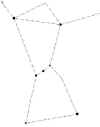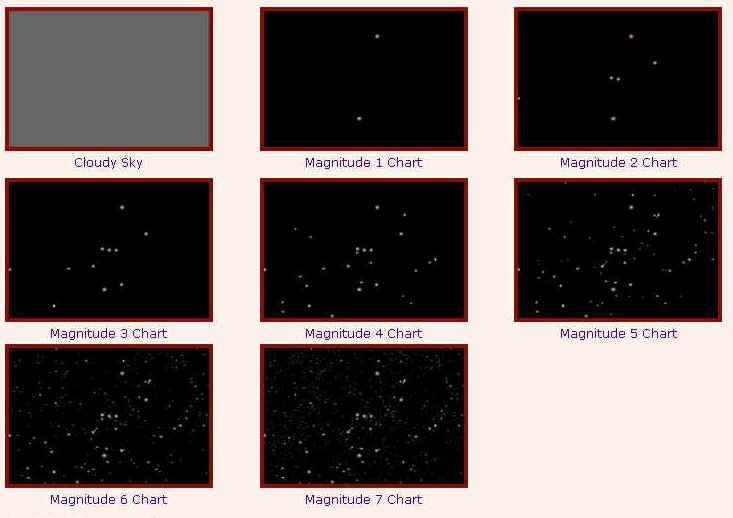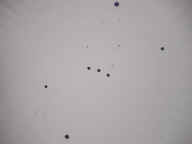|
Paper Plate Education
"Serving the Universe on a Paper
Plate"

Activity: Globe at Night
 Globe
at Night is a worldwide campaign to observe and record the magnitude of
visible stars in a common constellation, such as Orion. The limiting
magnitude suggests the level of light pollution at the observing site, which the
observer can compare to global sites. In this activity, you mark Orion's
brightest stars on a plate, then fill in the constellation's outline with the
stars you can see. Compare your plate with the Globe at Night magnitude
charts, and draw your picture of Orion. Globe
at Night is a worldwide campaign to observe and record the magnitude of
visible stars in a common constellation, such as Orion. The limiting
magnitude suggests the level of light pollution at the observing site, which the
observer can compare to global sites. In this activity, you mark Orion's
brightest stars on a plate, then fill in the constellation's outline with the
stars you can see. Compare your plate with the Globe at Night magnitude
charts, and draw your picture of Orion.
 Print a chart of Orion with a limiting magnitude of 2.5, which will show the
major stars that define Orion--the three "belt stars" plus Betelgeuse,
Rigel, Bellatrix, and Saiph. If you are using planetarium software to
print Orion's outline, set the field of view to about 25 degrees.
Print a chart of Orion with a limiting magnitude of 2.5, which will show the
major stars that define Orion--the three "belt stars" plus Betelgeuse,
Rigel, Bellatrix, and Saiph. If you are using planetarium software to
print Orion's outline, set the field of view to about 25 degrees.
  Tape the printed outline onto a stack of plates to make multiple copies.
Here, dark plates are used to simulate the night sky. At a drill press, drill
holes through the seven stars, similar to the Platisphere
activity.
Tape the printed outline onto a stack of plates to make multiple copies.
Here, dark plates are used to simulate the night sky. At a drill press, drill
holes through the seven stars, similar to the Platisphere
activity.
  When you go outside to observe Orion, rotate the plate so that the holes align
with the stars you see. The angle of the constellation will vary with your
latitude and the date. Next, mark all of the additional stars that
you see within Orion's boundary in their respective positions on the plate.
When you go outside to observe Orion, rotate the plate so that the holes align
with the stars you see. The angle of the constellation will vary with your
latitude and the date. Next, mark all of the additional stars that
you see within Orion's boundary in their respective positions on the plate.
| Return to the Globe at Night website, compare their
magnitude charts with your plate to determine the limiting magnitude of
your sky, and send your results to Globe at Night. It's
that simple. |
 |
VS. |
 |

  As an additional activity, you can draw your interpretation of the constellation
on the plate.
As an additional activity, you can draw your interpretation of the constellation
on the plate.
Or embark on a digital scavenger hunt
from Globe at Night.
Questions are at scavenger.doc. |